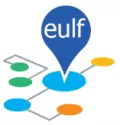
Many e-government public services and underlying processes use location information
This report describes a two step methodology for analysing and improving:
- how location information is used in e-government processes,
- together with an approach for estimating the impact of location enablement on the performance of e-Government processes.
The use of the methodology is illustrated by examining an existing use case: the Traffic Safety Monitoring process in Flanders.
The process and the current and potential integration of location information are described in detail, as well as the potential improvements, the potential impact of further spatially enabling the process and a series of recommendations.
This document is one of a series of guidance documents associated with the European Union Location Framework (EULF) Blueprint.
It should be read in conjunction with the companion guidance document “EULF Design of Location-Enabled e-Government Services”
Categorisation
Shared on


